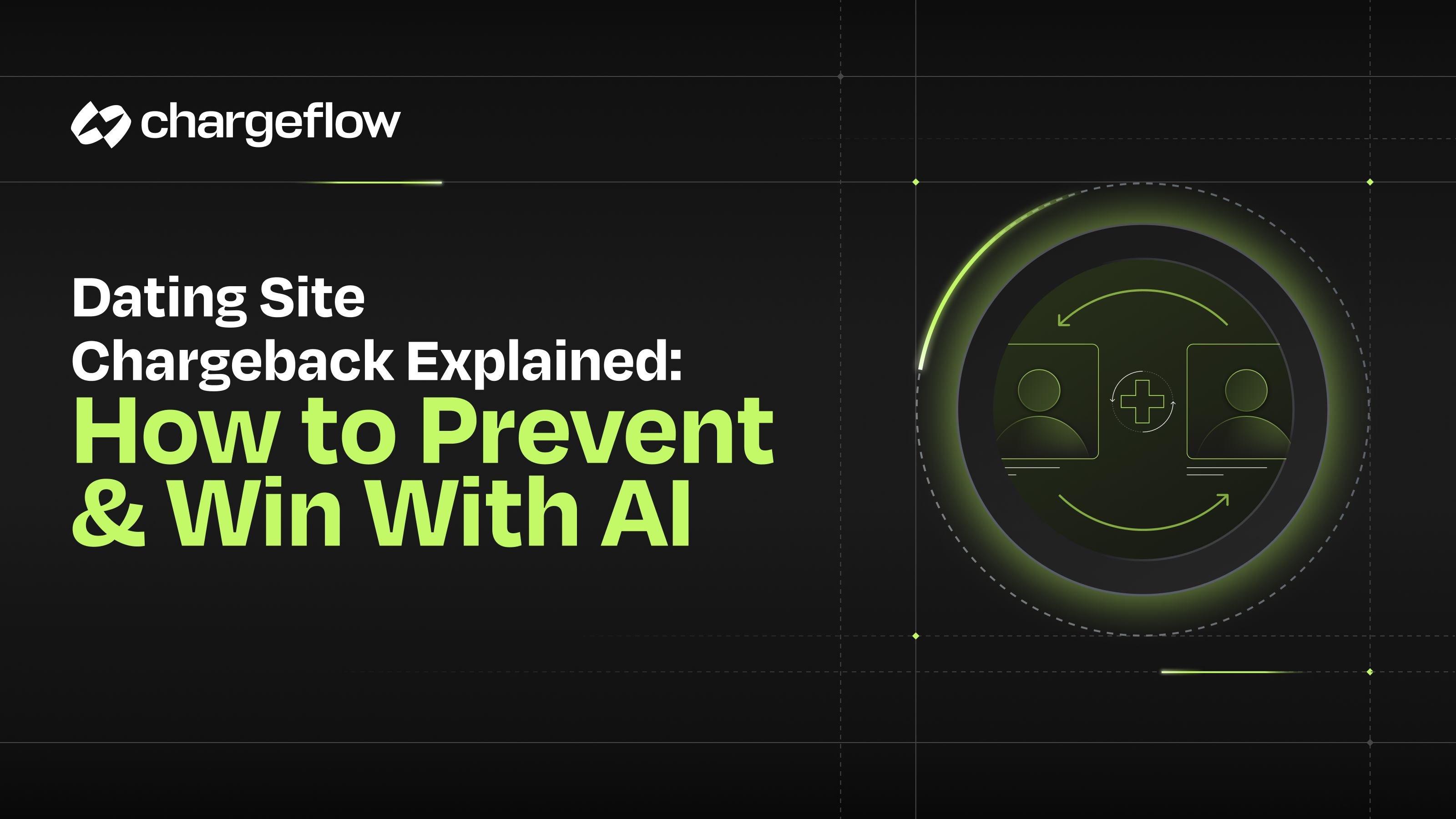Understanding Chargeback Costs: Recover and Prevent Losses

Chargebacks?
No longer your problem.
Recover 4x more chargebacks and prevent up to 90% of incoming ones, powered by AI and a global network of 15,000 merchants.
Learn how to recover and prevent chargeback losses by using tailored strategies, alerts, and recovery tools for merchants.
In today’s competitive eCommerce landscape, chargebacks can quickly erode profit margins. In 2023 alone, US chargebacks soared to $11 billion, each chargeback can cost merchants up to 350% of the original transaction value – costs that quickly add up. These hidden expenses impact everything from shipping fees to customer acquisition efforts, severely affecting profitability.
So, what can merchants do to minimize these losses?
The True Cost of Chargebacks
Let’s break down the costs of a $50 purchase that results in a chargeback:
- COGS (Cost of Goods Sold) - $10
The direct cost of producing/purchasing the product sold to the customer.
- CAC (Customer Acquisition Cost) - $20
This refers to the marketing, advertising, and sales costs involved in acquiring the customer who made the purchase.
- Shipping- $5
The cost of shipping the product to the customer is generally non-refundable.
- Chargeback Fee - $15
The fee imposed by the payment processor for handling the chargeback.
- Refund - $50
The full amount of the transaction is refunded to the customer once a chargeback is initiated.
Total Cost = $100
This example helps demonstrate how a $50 transaction can ultimately cost the merchant $100 because of various factors associated with chargebacks.
Chargeback Recovery Process
If the merchant compiles and presents the evidence correctly, the bank decides whether the merchant should win the case. If justified, the bank returns the funds to the merchant; otherwise, the customer receives them.
You can increase your chances of recovery by ensuring to include in your documentation:
- Proof of delivery, including tracking information or delivery confirmation.
- Detailed transaction records, such as customer interactions and communications.
- Signed contracts or receipts from the customer.
- Relevant terms or conditions, especially regarding returns or disputes.
Presenting clear, comprehensive evidence will significantly help merchants improve their chances of recovering the transaction amount.
Chargeback Alerts
Between the time the customer initiates a chargeback and it is received by the merchant’s bank (acquirer), there is a 24-hour window. In this window, a merchant can pay for a notification that they have a “pending” chargeback, known as an alert. If the merchant decides to refund the customer's pending chargeback, they are effectively canceling the transaction. Once the transaction is refunded, the chargeback can no longer proceed, thereby preventing further losses.
However, the downside of alerts includes the costs associated with them. The merchant must pay for the alert notification and also provide a full refund to the customer, resulting in the loss of the entire transaction cost and potentially more.
Chargeback Alerts vs. Recovery
Merchants often ask, “How much do chargeback alerts and prevention cost?”. As someone who works in sales, my first response is, “Why?”, I don’t ask this because I believe chargebacks are acceptable; rather, I want to understand their situation.
Chargebacks are costly, and both alerts and recovery tools are appropriate for specific situations.
Alerts: The primary goal of chargeback alerts is to prevent a chargeback from occurring. As mentioned, alerts can be a more expensive solution and should be utilized for their designated purpose – primarily to reduce chargeback ratios. The only time you would want to use alerts is if you have a legitimate fear of your chargeback ratio exceeding the benchmark or if it has already surpassed it and you want to decrease it. Alerts are particularly valuable for merchants in industries prone to high fraud rates, such as digital goods or subscription-based models, or those with high chargeback ratios.
Protecting your payment processor is crucial, as a high chargeback ratio can lead to entering a dispute management program. This can result in the payment processor holding reserves on the merchant’s cash flow and potentially closing the merchant’s processing account, jeopardizing the entire business.
Recovery: The goal here is to recover the entire chargeback value and the full transaction amount. Recovery is most effective when merchants can compile strong evidence and have lower chargeback ratios, as it allows them to dispute charges that are unwarranted, such as friendly fraud cases.
When to Use Each:
- Use Alerts if you fear your chargeback ratio exceeding the benchmark or it’s already surpassed it and you want to decrease it. Alerts are best for high-risk industries or to protect your critical processor relationship.
- Use Recovery when you want to fight back and recover the chargeback value and retain the transaction revenue, specifically when dealing with friendly fraud or unwarranted disputes.
Financial Model Comparison
Let's run a quick financial comparison using a $50 chargeback:
Using Alerts:
- COGS - $10
- CAC - $20
- Shipping- $5
- Chargeback fee - $15
- Refund (Transaction Value) - $50
- Alert - $29
Total Loss = $129 Loss
Using Recovery:

Total Loss = $15 loss
Summed Up
Understanding the true costs of chargebacks, along with the options available for recovery and prevention, is crucial for merchants. By evaluating these financial implications and knowing when to use chargeback alerts or recovery strategies, businesses can make informed decisions to protect their bottom line.
If you’re looking for effective ways to manage your chargeback costs and explore tailored solutions, Chargeflow is here to help. We specifically design our insights and tools to help you minimize chargeback losses and improve revenue recovery. So, don’t let chargebacks impact your business – partner with Chargeflow to safeguard your bottom line.

Chargebacks?
No longer your problem.
Recover 4x more chargebacks and prevent up to 90% of incoming ones, powered by AI and a global network of 15,000 merchants.






























.png)








